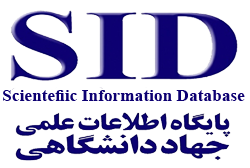Effectiveness of neurofeedback on attention, working memory, processing speed, and anxiety in dyslexic children
Effectiveness of neurofeedback
DOI:
https://doi.org/10.22122/cdj.v12i2.673Keywords:
Neurofeedback, Attention, MemoryAbstract
BACKGROUND: Presently, some treatments such as neurofeedback therapy (NFT) have become of great importance in the treatment of psychological disorders. Therefore, the aim of this study was to determine the effectiveness of NFT on attention and working memory, processing speed, and anxiety of dyslexic children.
METHODS: This quasi-experimental research was conducted with an unbalanced control group, a pretest-posttest design, and follow-up. The statistical population was all dyslexic children of 7-10 years of age in Karaj, Iran, from December 2021 to January 2022. The participants included 45 dyslexic children who were randomly divided into
3 groups of 15 people. The first and second groups received cognitive rehabilitation and NFT, respectively, and the third group received no treatment (control group). NFT was presented in 15 sessions (30-minutes) in the experimental groups. The instruments included the Integrated Visual and Auditory (IVA) + PLUS, Wechsler Memory Scale (WMS), Clinical Q Assessment, and the Spence Children's Anxiety Scale (SCAS). SPSS software was applied for data analysis.
RESULTS: The findings showed that after NFT, the scores of the experimental group in all outcomes decreased in the posttest and follow-up phases (P < 0.0001).
CONCLUSION: It can be concluded that the educational content of NFT can be used to increase attention, working memory, and processing speed, and reduce anxiety in dyslexic children. Therefore, it is suggested that the results of similar studies be applied in educational fields.
Downloads
Published
How to Cite
Issue
Section
License
Copyright (c) 2023 Chronic Diseases Journal

This work is licensed under a Creative Commons Attribution-NonCommercial 4.0 International License.
This work is licensed under a Creative Commons Attribution-NonCommercial 4.0 Unported License which allows users to read, copy, distribute and make derivative works for non-commercial purposes from the material, as long as the author of the original work is cited properly.



